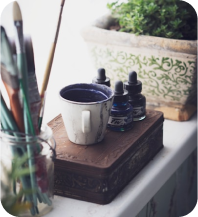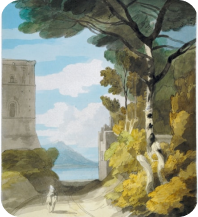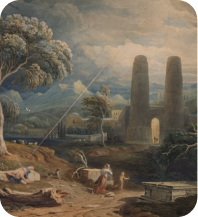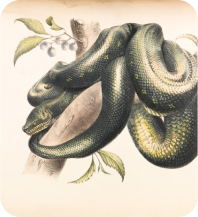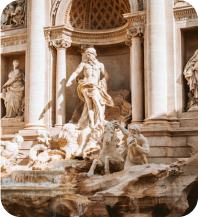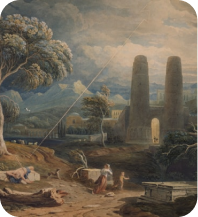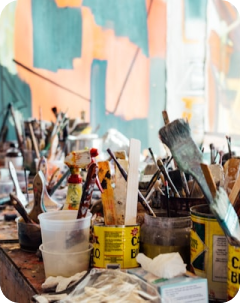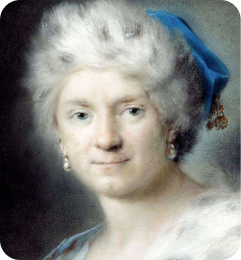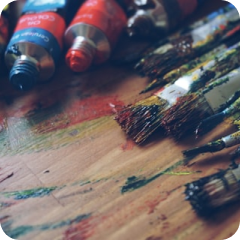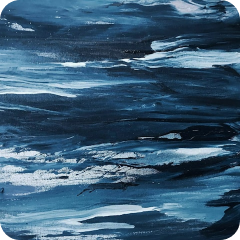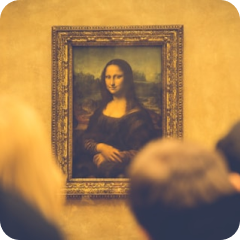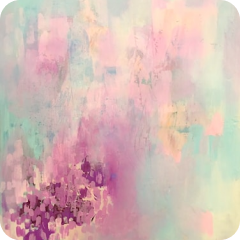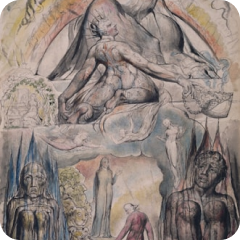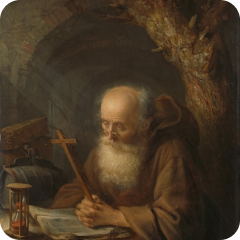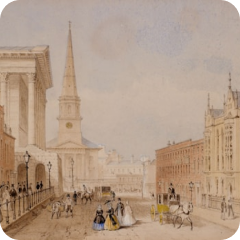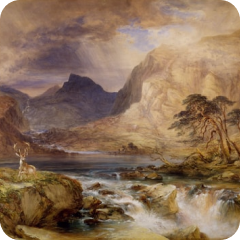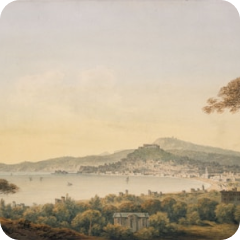Bring Your Walls to Life with Trumovo Canvas Prints
High-quality, customizable canvas art prints for any space

Create Your Custom Canvas in 4 Easy Steps

Step 1
Upload Your Image to the site

Step 2
Choose Size & Style

Step 3
Preview Your Design

Step 4
Place Your Order & Enjoy
;)
Top Categories
;)


Durable Prints
Long-lasting quality with vibrant colors.


Unique Designs
A variety of styles for every taste.


Personalized Art
Upload your image and create custom pieces.
On Sale Now
About Trumovo
Discover our exquisite collection of premium, tailor-made canvas art prints, designed to add a touch of elegance and personality to every room in your home. Whether you're looking to enhance your living room, bedroom, or office space, our art prints offer the perfect blend of style and sophistication, ensuring that each piece complements your unique taste and decor.
Hidden Gems
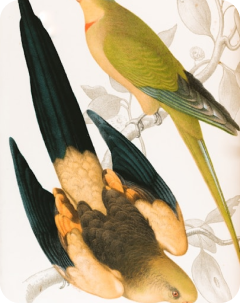
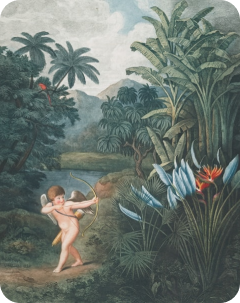
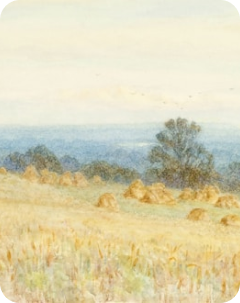

What Our Customers Say

“Lorem ipsum dolor sit amet consectetur. Nunc malesuada varius gravida lacus. Arcu fames vitae neque nulla hendrerit neque augue. Tortor ultricies lobortis consectetur commodo. Pretium eget lacus magna vel in eu amet sit.”

TechGuru88
Apex Solutions

“Lorem ipsum dolor sit amet consectetur. Nunc malesuada varius gravida lacus. Arcu fames vitae neque nulla hendrerit neque augue. Tortor ultricies lobortis consectetur commodo. Pretium eget lacus magna vel in eu amet sit.”

SunnyTraveler92
Luminous Innovations

“Lorem ipsum dolor sit amet consectetur. Nunc malesuada varius gravida lacus. Arcu fames vitae neque nulla hendrerit neque augue. Tortor ultricies lobortis consectetur commodo. Pretium eget lacus magna vel in eu amet sit.”

ArtisticSoul77
Nexus Dynamics

“Lorem ipsum dolor sit amet consectetur. Nunc malesuada varius gravida lacus. Arcu fames vitae neque nulla hendrerit neque augue. Tortor ultricies lobortis consectetur commodo. Pretium eget lacus magna vel in eu amet sit.”

SunnyTraveler92
Luminous Innovations
Turn Memories into Art with Framed Glass Photos and Pictures
The journey of framed glass photos begins with an extraordinary tale of innovation that spans more than a century. During the late 1800s, photographers discovered that capturing images on glass plates offered unprecedented clarity and detail that paper-based methods simply could not match. These delicate photographic masterpieces required specialized handling and presentation methods that would eventually evolve into the sophisticated framing techniques we recognize today.
Glass plate photography emerged as a revolutionary method during an era when permanence and artistic excellence were paramount concerns for visual documentation. The process involved coating thin glass surfaces with light-sensitive emulsions, creating negatives that could produce remarkably sharp and detailed positive prints. Unlike their paper counterparts, these glass-based images possessed an ethereal quality that seemed to capture not just the visual appearance of subjects but also their essence and character.
The transition from simple glass plates to beautifully framed glass photos represented a significant leap in both artistic presentation and preservation science. Early practitioners recognized that protecting these fragile photographic treasures required more than basic storage solutions. They needed display methods that would showcase the unique luminous qualities of glass photography while providing adequate protection against environmental threats such as moisture, dust, and physical damage.
Museums and private collectors quickly adopted sophisticated framing techniques specifically designed for glass photographs. These early frames featured multiple layers of protection, including backing materials that prevented moisture infiltration and specialized mounting systems that minimized physical stress on the delicate glass surfaces. The frames themselves became works of art, often crafted from premium materials such as solid wood, brass, or even silver, complementing the elegance of the photographic images they contained.
As photographic techniques evolved throughout the early twentieth century, so did the methods for displaying and preserving these precious visual documents. Frame makers developed increasingly sophisticated approaches to mounting glass photographs, incorporating advances in materials science and conservation principles that extended the lifespan of these fragile artworks significantly.
Contemporary Glass Photo Framing Techniques and Materials
Modern framed glass photos represent the culmination of decades of innovation in both photographic science and preservation techniques. Contemporary methods combine traditional craftsmanship with cutting-edge materials to create display solutions that protect precious images while enhancing their visual impact dramatically.
Today's glass photo frames utilize advanced materials that were unimaginable to early practitioners. UV-filtering glass protects photographs from harmful light exposure that can cause fading and deterioration over time. Acid-free matting materials prevent chemical reactions that historically damaged countless photographic treasures. Archival-quality backing boards provide stable support while allowing air circulation that prevents moisture buildup.
The selection of appropriate mounting materials has become a sophisticated science unto itself. Contemporary conservators understand that different types of glass photographs require specific mounting approaches based on their age, condition, and chemical composition. Vintage glass plates from the early 1900s may require different handling than modern glass prints created using contemporary photographic processes.
Professional framers now employ specialized tools and techniques designed specifically for handling delicate glass photographs. These include padded work surfaces, precision cutting tools, and measuring devices that ensure perfect alignment and protection during the mounting process. The goal extends beyond simple preservation to encompass optimal presentation that highlights the unique characteristics of each individual photograph.
Climate control considerations have become increasingly important in contemporary framing practices. Modern frames often incorporate sealed environments that maintain stable humidity levels and prevent temperature fluctuations that could damage delicate photographic materials. These controlled environments ensure that framed glass photos can survive for generations while maintaining their original clarity and visual impact.
Artistic Considerations in Glass Photo Display
The artistic presentation of framed glass photos requires careful consideration of numerous aesthetic factors that can dramatically influence the viewer's experience and emotional response. Unlike conventional paper photographs, glass images possess unique optical properties that interact with light in complex and often surprising ways.
Lighting plays a crucial role in the effective display of framed glass photos. These images can appear dramatically different under various lighting conditions, with some revealing hidden details or subtle tonal variations that are invisible under standard illumination. Skilled display designers often incorporate specialized lighting systems that enhance the natural luminosity of glass photographs while avoiding harsh reflections or glare that might obscure important visual elements.
The choice of matting materials and colors requires particular sensitivity when working with glass photographs. Traditional white or cream matting may overwhelm the subtle tonal ranges characteristic of historical glass photography, while darker matting options can provide dramatic contrast that emphasizes the ethereal quality of these unique images. Many contemporary framers prefer neutral gray tones that complement without competing with the photographic content.
Frame selection itself becomes an artistic decision that can significantly impact the overall presentation of glass photographs. Heavy, ornate frames may complement the historical significance of vintage glass plates, while sleek, minimalist designs often better suit contemporary glass photography. The goal involves creating harmonious relationships between the photographic content, the frame, and the intended display environment.
Spatial considerations extend beyond individual frames to encompass entire gallery walls or room displays. Glass photographs often work best when grouped thoughtfully, creating visual narratives that guide viewers through related images or themes. The reflective qualities of glass can create interesting visual interactions between adjacent frames, adding layers of complexity to the viewing experience that skilled display designers can exploit creatively.
Preservation Science and Longevity Factors
The preservation of framed glass photos represents one of the most challenging aspects of photographic conservation, requiring deep understanding of both chemical processes and environmental factors that threaten these delicate artworks. Glass photographs face unique preservation challenges that differ significantly from those affecting paper-based images.
Chemical stability constitutes a primary concern when preserving glass photographs for extended periods. The light-sensitive emulsions used in historical glass photography can deteriorate through various chemical processes, including oxidation, hydrolysis, and reactions with environmental contaminants. Modern preservation techniques employ chemically inert materials that prevent these degradation processes while maintaining the structural integrity of both the glass substrate and the photographic emulsion.
Environmental monitoring has become increasingly sophisticated in professional preservation settings. Contemporary conservation laboratories utilize advanced sensors that continuously monitor temperature, humidity, light exposure, and air quality around framed glass photos. These monitoring systems can detect potentially damaging conditions before they cause irreversible damage to precious photographic collections.
The development of specialized cleaning techniques has revolutionized the maintenance of glass photographs. Traditional cleaning methods often proved too aggressive for delicate photographic emulsions, leading to permanent damage or complete loss of image information. Modern conservators employ gentle cleaning solutions and specialized tools that remove contamination without disturbing the photographic layers.
Disaster preparedness has become an essential component of glass photo preservation programs. Museums and private collectors now develop comprehensive emergency protocols that protect these irreplaceable images from floods, fires, earthquakes, and other potential catastrophes. These protocols often include detailed evacuation procedures, specialized storage containers, and backup documentation systems that ensure cultural heritage survives even in worst-case scenarios.
Creative Display Arrangements and Gallery Concepts
Creating compelling displays of framed glass photos requires understanding both the unique visual properties of these images and the psychological impact of different arrangement strategies. Successful gallery presentations can transform individual photographs into powerful narrative experiences that engage viewers on multiple levels.
Thematic groupings represent one of the most effective approaches to displaying glass photographs. Related images that share common subjects, time periods, or artistic styles can create compelling visual stories that guide viewers through complex historical or artistic narratives. These groupings work particularly well with historical glass plates that document specific locations, events, or individuals over extended time periods.
Chronological arrangements offer another powerful display strategy, particularly when working with collections that span significant time periods. Viewers can observe the evolution of photographic techniques, artistic styles, or documentary subjects through carefully sequenced displays that reveal changes and developments over time. This approach works exceptionally well with glass photographs because the medium's longevity allows for meaningful historical comparisons.
Scale variations within gallery displays can create dynamic visual experiences that maintain viewer interest while highlighting the unique characteristics of different photographs. Mixing larger and smaller framed glass photos creates rhythm and visual interest that prevents gallery fatigue while allowing each image to contribute its unique perspective to the overall narrative.
Interactive elements can enhance the viewing experience without compromising the integrity of the photographs themselves. Information panels, digital displays, and audio guides can provide historical context, artist biographies, or detailed descriptions of photographic techniques that deepen viewer understanding and appreciation.
Material Science Behind Glass Photography Substrates
Understanding the material properties of glass substrates used in photography requires examination of both historical manufacturing processes and contemporary production methods. The quality and characteristics of glass significantly impact both the initial photographic results and long-term preservation considerations.
Historical glass plates were typically manufactured using soda-lime glass compositions that provided adequate optical clarity while remaining economically viable for widespread photographic use. These early glasses often contained impurities that can be observed under magnification, creating subtle textures and variations that contribute to the distinctive character of vintage glass photographs.
Contemporary glass photography utilizes advanced optical glasses with precisely controlled compositions that eliminate many of the impurities found in historical materials. These modern substrates offer superior optical clarity and chemical stability, resulting in photographs with exceptional sharpness and longevity potential that far exceeds their historical predecessors.
The thickness of glass substrates presents important considerations for both photographic quality and practical handling. Thinner glasses offer reduced weight and improved optical properties but require more careful handling to prevent breakage. Thicker substrates provide greater durability but may introduce optical distortions that affect image quality.
Surface treatments applied to glass substrates can dramatically influence both photographic results and preservation characteristics. Anti-reflective coatings reduce unwanted reflections while specialized surface textures can create unique artistic effects. These treatments must be carefully selected to ensure compatibility with photographic emulsions and long-term stability.
Conservation Protocols for Vintage Glass Photographs
Professional conservation of vintage glass photographs demands specialized knowledge of both historical photographic processes and contemporary preservation science. These unique artworks require careful assessment and customized treatment approaches that respect their historical significance while ensuring long-term survival.
Documentation forms the foundation of any serious conservation effort. Before beginning any treatment, conservators create detailed photographic records that capture the current condition of each glass photograph, including any existing damage, deterioration patterns, or previous repair attempts. This documentation serves as a permanent record that guides treatment decisions and provides valuable information for future conservators.
Condition assessment involves systematic examination of both the glass substrate and the photographic emulsion using specialized equipment and techniques. Conservators examine images under various lighting conditions, often employing magnification and specialized filters that reveal details invisible to casual observation. This thorough assessment identifies specific preservation needs and guides the development of appropriate treatment strategies.
Cleaning procedures for vintage glass photographs require extraordinary care and specialized materials. Traditional cleaning solutions that work well for modern photographs may cause irreversible damage to historical emulsions. Conservators employ gentle, reversible cleaning methods that remove contamination while preserving the original photographic materials.
Stabilization treatments focus on preventing further deterioration rather than attempting to reverse existing damage. These treatments may include edge sealing to prevent moisture infiltration, protective coatings that shield emulsions from environmental contaminants, or structural reinforcement that prevents mechanical damage during handling.
Modern Glass Photography Revival and Contemporary Artists
The twenty-first century has witnessed an remarkable renaissance in glass photography as contemporary artists rediscover the unique aesthetic possibilities offered by this historic medium. Modern practitioners combine traditional glass plate techniques with contemporary artistic sensibilities, creating compelling works that bridge historical and contemporary photographic practices.
Digital hybrid approaches represent one of the most interesting developments in contemporary glass photography. Artists create initial images using digital cameras or scanners, then transfer these images onto glass substrates using various printing and coating techniques. This approach combines the convenience of digital capture with the distinctive aesthetic qualities of glass presentation.
Alternative process exploration has led to innovative techniques that expand the possibilities of glass photography beyond traditional boundaries. Contemporary artists experiment with different emulsion types, substrate treatments, and processing chemicals to create unique visual effects that would be impossible using conventional photographic methods.
Sculptural approaches to glass photography treat the medium as three-dimensional art rather than simple two-dimensional images. These works may incorporate multiple glass layers, complex lighting systems, or interactive elements that engage viewers in novel ways while showcasing the unique properties of glass as a photographic medium.
Gallery acceptance of contemporary glass photography has grown significantly as curators and collectors recognize the medium's artistic potential. Major museums now regularly feature glass photography exhibitions, and contemporary art markets have embraced these works as legitimate additions to serious photographic collections.
Environmental Factors Affecting Glass Photo Preservation
The preservation of framed glass photos requires careful attention to environmental conditions that can dramatically impact the longevity and visual quality of these precious images. Unlike paper photographs, glass images face unique challenges related to thermal expansion, moisture condensation, and mechanical stress that demand specialized preservation approaches.
Temperature fluctuations pose significant threats to glass photographs because different materials within the frame assembly expand and contract at different rates. These differential expansion rates can create mechanical stress that leads to cracking, delamination, or complete failure of the photographic emulsion. Professional preservation environments maintain strict temperature controls that minimize these fluctuations while providing stable conditions for long-term storage.
Humidity control represents another critical factor in glass photo preservation. Excessive moisture can promote chemical reactions that degrade photographic emulsions, while insufficient humidity can cause materials to become brittle and prone to mechanical damage. Professional conservators maintain relative humidity levels between forty and sixty percent, providing optimal conditions for most types of glass photographs.
Air quality considerations extend beyond simple humidity control to encompass the removal of pollutants that can chemically react with photographic materials. Urban environments often contain sulfur compounds, nitrogen oxides, and other pollutants that can cause rapid deterioration of sensitive photographic emulsions. Professional preservation facilities employ sophisticated air filtration systems that remove these harmful compounds while maintaining appropriate ventilation levels.
Light exposure management requires balancing the need for visibility with the preservation imperative to minimize photochemical damage. Many photographic emulsions remain light-sensitive even after processing, meaning that continued exposure can cause gradual fading or color shifts. Professional display lighting employs UV-filtered sources with carefully controlled intensity levels that allow viewing while minimizing cumulative light damage.
Restoration Techniques for Damaged Glass Photographs
The restoration of damaged glass photographs represents one of the most challenging aspects of photographic conservation, requiring specialized skills and equipment that combine traditional craftsmanship with modern scientific understanding. Each restoration project presents unique challenges that demand customized approaches based on the specific type and extent of damage present.
Crack repair in glass photographs requires extraordinary precision because any restoration work must preserve both the structural integrity of the glass substrate and the photographic image itself. Professional conservators employ specialized adhesives and reinforcement techniques that provide mechanical stability while remaining virtually invisible to viewers. These repairs often require microscopic precision and can take many hours to complete properly.
Emulsion stabilization becomes necessary when the photographic layer begins separating from the glass substrate. This type of damage often results from age-related deterioration of the original adhesive systems or environmental exposure that causes different materials to expand and contract at different rates. Restoration involves carefully re-adhering loose emulsion areas using reversible conservation adhesives that maintain flexibility over time.
Missing image areas present some of the most challenging restoration problems because recreating photographic information requires both artistic skill and deep understanding of historical photographic processes. Conservators may employ in-painting techniques using reversible materials that blend seamlessly with original photographic tones while remaining distinguishable under close examination.
Chemical staining removal often requires sophisticated understanding of both the original photographic chemistry and the chemical processes that created the staining. Different types of stains require different treatment approaches, and conservators must carefully test potential treatments on small, inconspicuous areas before proceeding with full restoration work.
Digital Documentation and Archive Creation
The creation of comprehensive digital archives represents a crucial component of modern glass photo preservation strategies. Digital documentation serves multiple purposes, providing backup copies that protect against complete loss while enabling broader access to these precious cultural resources without exposing the originals to handling damage.
High-resolution scanning of glass photographs requires specialized equipment and techniques that capture the full tonal range and fine detail characteristics of the original images. Professional digitization employs scanners capable of resolving details far beyond what human vision can perceive, ensuring that digital copies preserve even the most subtle photographic information for future generations.
Color management becomes particularly complex when digitizing glass photographs because these images often possess tonal characteristics that differ significantly from contemporary photographic materials. Professional digitization workflows employ calibrated color management systems that accurately represent the unique aesthetic qualities of glass photography while maintaining consistency across different viewing devices and printing systems.
Metadata creation involves documenting comprehensive information about each photograph, including its historical context, technical specifications, condition assessments, and any restoration work performed. This information becomes invaluable for researchers, curators, and conservators who may work with these images in the future.
Storage system design for digital archives must balance accessibility with long-term preservation requirements. Professional archives employ redundant storage systems with multiple backup copies stored in different geographical locations to protect against data loss from technical failures or natural disasters.
Artistic Merit and Aesthetic Appreciation
The aesthetic appreciation of framed glass photos requires understanding both their historical significance and their unique visual characteristics that distinguish them from other photographic media. These images possess qualities that continue to captivate viewers more than a century after their creation, demonstrating the enduring power of this remarkable photographic medium.
Tonal rendering in glass photography often exhibits characteristics that modern digital photography struggles to replicate. The interaction between light-sensitive emulsions and glass substrates creates subtle gradations and tonal transitions that possess an almost three-dimensional quality. These tonal characteristics contribute to the distinctive "look" that makes glass photographs instantly recognizable to experienced viewers.
Depth perception in glass photographs often appears enhanced compared to paper-based images, possibly due to the optical properties of the glass substrate itself. Viewers frequently report that glass photographs seem to possess greater dimensional depth, with foreground and background elements appearing more distinctly separated than in conventional photographic prints.
Surface quality represents another distinctive characteristic of glass photography. The perfectly smooth surface of glass substrates eliminates the textural interference that paper grain can introduce, allowing viewers to focus entirely on the photographic content without distraction. This clarity can make glass photographs appear almost hyper-realistic, particularly when viewed under appropriate lighting conditions.
Historical context adds layers of meaning to glass photographs that extend beyond their immediate visual content. These images serve as windows into past eras, documenting clothing styles, architectural details, social customs, and environmental conditions that provide valuable insights into historical periods and cultures.
Photographic Chemistry and Emulsion Science
Understanding the chemical processes underlying glass photography provides essential insight into both the creation and preservation of these remarkable images. The chemistry involved in glass photography differs significantly from conventional paper-based photography, creating unique characteristics and preservation challenges that require specialized knowledge.
Emulsion composition in glass photography typically involved gelatin-based systems that provided excellent adhesion to glass surfaces while maintaining the light sensitivity necessary for photographic exposure. These emulsions contained silver halide crystals suspended in carefully prepared gelatin matrices that could be coated uniformly across glass surfaces.
Development chemistry for glass photographs required precise control of processing solutions and timing to achieve optimal results. Unlike paper photography, where processing errors might be correctable through reprinting, mistakes in glass photography processing often resulted in complete loss of the image because the glass plate itself served as the final photographic product.
Fixing processes removed unexposed silver halides from processed glass photographs, but incomplete fixing could lead to long-term instability and gradual image deterioration. Historical processing standards were often less rigorous than contemporary practices, meaning that many surviving glass photographs may contain residual chemicals that continue threatening their long-term stability.
Washing procedures following chemical processing required particular care because inadequate washing could leave processing chemicals within the emulsion that would cause gradual deterioration over time. The non-porous nature of glass substrates made thorough washing more challenging than with paper photographs, requiring extended washing times and careful attention to water quality.
Cultural Impact and Historical Documentation
Framed glass photos serve as invaluable cultural documents that provide unique insights into historical periods and social conditions that might otherwise be lost to time. These images capture not only visual information but also cultural attitudes, social structures, and daily life details that written records often overlook or minimize.
Documentary photography using glass plates created some of the most compelling visual records of late nineteenth and early twentieth century life. Professional photographers of this era recognized that glass photography offered superior quality for important documentary work, leading to extensive use of this medium for recording historical events, architectural landmarks, and social conditions.
Portrait photography on glass plates captured intimate details and subtle expressions that paper-based photography often failed to preserve. The exceptional sharpness and tonal range of glass photography made it particularly suitable for formal portraits where precise detail reproduction was essential for artistic and documentary purposes.
Landscape documentation using glass photography created visual records of natural environments before widespread industrialization and development altered these landscapes permanently. Many of these photographs now serve as baseline references for environmental scientists studying long-term ecological changes and habitat modifications.
Social documentation through glass photography provides modern historians with unprecedented insights into daily life, working conditions, and social relationships of past eras. These images often reveal details about clothing, tools, architecture, and social interactions that written records rarely capture with comparable detail and authenticity.
Collector Markets and Valuation Considerations
The market for framed glass photos has evolved significantly as collectors and institutions recognize both the artistic merit and historical importance of these unique photographic artifacts. Understanding market dynamics provides important insights for both potential collectors and institutions considering acquisitions of glass photography collections.
Rarity factors significantly influence the value of glass photographs in contemporary collector markets. Images by recognized photographers, photographs documenting important historical events, or examples representing significant artistic movements command premium prices that reflect their cultural importance and scarcity.
Condition assessment plays a crucial role in valuation because restoration of damaged glass photographs can be extremely expensive and may not always be possible without compromising the image's historical integrity. Collectors and institutions must carefully evaluate the cost of necessary conservation work against the potential value and importance of specific photographs.
Provenance documentation adds significant value to glass photographs because documented ownership history provides authenticity verification and often reveals important contextual information about the images themselves. Photographs with clear provenance chains command higher prices and receive greater institutional interest than examples with uncertain histories.
Market trends in glass photography collection have shown steady growth as more collectors recognize the unique aesthetic and historical qualities of these images. Museum exhibitions and scholarly publications have increased public awareness of glass photography, leading to expanded collector interest and rising market values for exceptional examples.
Frame Construction and Joinery Methods
The construction of frames specifically designed for glass photographs requires specialized woodworking skills and understanding of the unique requirements these delicate images impose. Traditional joinery methods must be adapted to accommodate the specific needs of glass photography while maintaining the structural integrity necessary for long-term display.
Rabbet design in glass photo frames must provide adequate depth to accommodate the glass photograph plus any protective glazing and mounting materials while maintaining proper alignment of all components. The rabbet must be precisely cut to prevent stress concentration that could damage the glass photograph during installation or environmental changes.
Corner joints in glass photo frames require exceptional strength because these frames often support significant weight while maintaining perfect alignment that prevents mechanical stress on the enclosed photograph. Traditional joinery methods such as mortise and tenon joints provide superior strength compared to simpler corner constructions.
Wood selection for glass photo frames should prioritize stability and low acid content to prevent chemical interactions that could damage the enclosed photographs over time. Hardwoods such as oak, maple, or walnut provide excellent stability, while softer woods like pine should be avoided due to their higher resin content and tendency to warp.
Finishing materials applied to glass photo frames must be carefully selected to prevent chemical interactions with the enclosed photographs. Traditional finishes such as shellac or oil-based varnishes may off-gas chemicals that could damage photographic emulsions over time. Modern conservation-quality finishes provide attractive appearance while maintaining chemical stability.
Professional Conservation Standards and Practices
Professional conservation of framed glass photos follows established standards and protocols developed by leading conservation organizations worldwide. These standards ensure that preservation work meets the highest ethical and practical requirements while respecting the cultural and artistic significance of these important photographic artifacts.
Documentation standards require comprehensive recording of all conservation activities, including detailed condition reports, treatment protocols, materials used, and photographic documentation of work in progress. This documentation provides essential information for future conservators and helps track the long-term effectiveness of different treatment approaches.
Reversibility principles guide all conservation treatments, ensuring that any materials or techniques employed can be safely removed without damaging the original photograph. This principle protects the long-term interests of the artwork while allowing for future improvements in conservation science and techniques.
Minimal intervention philosophies emphasize preserving as much original material as possible while addressing only those problems that threaten the immediate survival of the photograph. This approach respects the historical integrity of the artwork while focusing conservation resources on the most critical preservation needs.
Peer review processes ensure that complex conservation projects receive input from multiple experts before proceeding with potentially irreversible treatments. These collaborative approaches help identify potential problems and alternative solutions that individual conservators might overlook.
Specialized Mounting Systems and Hardware
The mounting of glass photographs within frames requires specialized hardware and techniques that protect these delicate images while providing secure, long-term support. Professional mounting systems must accommodate the unique properties of glass photography while preventing mechanical stress that could cause damage over time.
Pressure-sensitive mounting methods distribute the weight of glass photographs evenly across their surfaces, preventing stress concentration that could lead to cracking or other mechanical damage. These systems often employ cushioned supports that accommodate slight dimensional changes due to environmental fluctuations.
Floating mount designs separate glass photographs from direct contact with frame components, reducing the risk of chemical interactions while providing visual emphasis that enhances the presentation of the images. These mounting systems require precise engineering to maintain proper alignment while allowing for thermal expansion and contraction.
Mechanical fastening systems must provide secure attachment without creating stress points that could damage the glass photographs. Professional mounting hardware often employs spring-loaded mechanisms that maintain consistent pressure while accommodating dimensional changes due to environmental conditions.
Gasket systems prevent moisture infiltration while allowing controlled air exchange that prevents pressure buildup within sealed frames. These systems require careful design to balance protection against environmental threats with the need for pressure equalization during temperature and altitude changes.
Lighting Design for Glass Photo Displays
Effective lighting design for framed glass photos requires understanding both the optical properties of glass photography and the physiological aspects of human vision that influence viewing experiences. Proper lighting can transform glass photographs from simple historical artifacts into compelling artistic experiences that engage viewers emotionally and intellectually.
Directional lighting considerations become particularly important with glass photographs because these images can appear dramatically different depending on the angle and intensity of illumination. Grazing light can reveal surface textures and subtle tonal variations that are invisible under direct lighting, while backlighting can create dramatic effects that emphasize the translucent qualities of certain glass photographic processes.
Color temperature selection affects both the visual appearance of glass photographs and their long-term preservation. Warmer color temperatures often complement the tonal characteristics of historical glass photography while cooler temperatures may better suit contemporary glass photographic works. UV-filtered lighting sources protect photographs from harmful ultraviolet radiation while providing excellent color rendering.
Intensity control allows viewers to experience glass photographs under optimal conditions while minimizing cumulative light exposure that could cause gradual deterioration. Programmable lighting systems can provide bright illumination during viewing periods while reducing intensity during off-hours to extend the lifespan of light-sensitive photographic materials.
Glare elimination requires careful positioning of light sources and consideration of viewing angles to prevent reflections that obscure photographic details. Anti-reflective coatings on protective glazing can significantly reduce unwanted reflections while maintaining optical clarity and color accuracy.
Historical Manufacturing Processes and Equipment
The manufacturing processes used to create glass photographs during their historical peak represent fascinating examples of nineteenth and early twentieth century precision craftsmanship. Understanding these processes provides valuable context for appreciating both the technical achievements and artistic possibilities of glass photography.
Plate preparation involved carefully cleaning glass surfaces to remove any contamination that could interfere with emulsion adhesion or photographic quality. This cleaning process required specialized solvents and techniques that ensured completely clean surfaces without leaving residues that could affect photographic results.
Emulsion coating required precise control of temperature, viscosity, and application techniques to achieve uniform layer thickness across entire glass surfaces. Skilled technicians developed specialized tools and methods for spreading emulsions evenly while avoiding air bubbles or other defects that could compromise photographic quality.
Drying procedures followed strict protocols that prevented contamination while ensuring complete removal of solvents and moisture from the prepared plates. Controlled environment drying rooms maintained specific temperature and humidity conditions that optimized emulsion properties while preventing premature aging or chemical changes.
Quality control measures included systematic testing of prepared plates to ensure consistent photographic properties and adequate shelf life. Manufacturers developed standardized testing procedures that verified emulsion sensitivity, contrast characteristics, and storage stability before releasing products to photographers.
Contemporary Frame Manufacturing and Quality Standards
Modern manufacturing of frames designed specifically for glass photographs incorporates advanced materials science and precision manufacturing techniques that were unavailable to historical frame makers. Contemporary frames offer superior protection and presentation capabilities while maintaining the aesthetic appeal that makes glass photography so compelling.
Computer-controlled machinery enables precision cutting and assembly that ensures perfect alignment and fit of all frame components. This precision prevents mechanical stress on enclosed photographs while creating professional appearance that enhances the presentation of precious photographic artworks.
Material selection for contemporary glass photo frames emphasizes chemical stability, dimensional stability, and aesthetic appeal. Modern frame makers can choose from a wide range of materials that offer superior performance compared to historical options while maintaining traditional appearance when desired.
Quality assurance procedures in contemporary frame manufacturing include systematic testing of materials, assembly methods, and finished products to ensure they meet professional conservation standards. These procedures help identify potential problems before frames are sold and provide confidence that enclosed photographs will receive appropriate protection.
Customization capabilities allow contemporary frame makers to create specialized solutions for unique glass photographs that may require non-standard mounting or protection systems. This flexibility ensures that even unusual or damaged photographs can receive appropriate framing that optimizes both protection and presentation.
Gallery Design and Exhibition Planning
Creating successful exhibitions of framed glass photos requires careful consideration of spatial design, lighting, security, and visitor flow patterns that optimize both the viewing experience and the protection of these precious artifacts. Professional exhibition design combines aesthetic considerations with practical preservation requirements to create compelling displays that engage audiences while safeguarding irreplaceable cultural resources.
Space planning for glass photography exhibitions must account for optimal viewing distances that allow visitors to appreciate fine details while preventing accidental contact with display cases or frames. Professional exhibition designers employ established guidelines for visitor circulation that maintain appropriate viewing conditions while accommodating expected attendance levels.
Security considerations for glass photography exhibitions often exceed those required for conventional photographic displays because of the fragility and often irreplaceable nature of glass photographs. Security systems must protect against both theft and accidental damage while avoiding intrusive measures that detract from the viewing experience.
Environmental controls within exhibition spaces require sophisticated climate management systems that maintain stable conditions regardless of visitor loads or external weather conditions. These systems must provide uniform temperature and humidity control throughout the exhibition space while avoiding air currents that could disturb displayed materials.
Interpretive materials enhance visitor understanding and appreciation of glass photography while providing educational context that deepens the viewing experience. Professional exhibition designers create interpretive programs that explain photographic processes, historical contexts, and artistic significance without overwhelming the primary focus on the photographs themselves.
Private Collection Management and Storage
Managing private collections of framed glass photos requires systematic approaches that ensure proper care and organization while providing convenient access for study and enjoyment. Successful collection management combines professional conservation principles with practical considerations that accommodate the specific needs and resources of private collectors.
Inventory systems for glass photography collections should document detailed information about each photograph, including acquisition details, condition assessments, conservation history, and current location within the collection. Professional database systems enable efficient searching and retrieval while providing platforms for ongoing condition monitoring and conservation planning.
Storage environment design must provide stable conditions that protect glass photographs from environmental threats while allowing reasonable access for study and enjoyment. Private collectors can achieve professional-quality storage conditions using properly designed climate-controlled spaces that maintain appropriate temperature and humidity levels.
Handling protocols protect glass photographs from accidental damage during examination or relocation. These protocols include proper lifting techniques, appropriate work surfaces, and protective equipment that minimizes the risk of drops, impacts, or contamination during handling.
Insurance considerations for glass photography collections require accurate documentation of both artistic and historical value. Professional appraisals provide essential documentation for insurance purposes while helping collectors understand the significance and value of their holdings.
Photographic Emulsion Types and Characteristics
Different types of photographic emulsions used in glass photography exhibit distinct characteristics that influence both their appearance and preservation requirements. Understanding these differences helps collectors, conservators, and viewers appreciate the technical achievements represented by various glass photographic processes.
Gelatin dry plate emulsions represented the most common type of glass photography during the medium's peak popularity. These emulsions provided excellent sensitivity and resolution while offering reasonable storage stability that made them practical for widespread use by professional and amateur photographers.
Collodion wet plate processes preceded dry plate methods and required immediate processing after exposure. While more technically demanding, wet plate processes often produced images with exceptional sharpness and unique tonal characteristics that many photographers preferred despite the increased complexity.
Albumen emulsions were sometimes used for glass photography, particularly in specialized applications where specific tonal characteristics were desired. These emulsions often exhibited distinctive color tones and surface characteristics that distinguished them from other glass photography processes.
Alternative emulsion systems were developed for specialized applications such as scientific photography, astronomical imaging, or artistic experimentation. These specialized emulsions often possessed unique characteristics such as extended red sensitivity, high contrast, or unusual spectral responses that made them valuable for specific applications.
Display Environment Design and Optimization
Creating optimal display environments for framed glass photos requires careful integration of aesthetic considerations with practical preservation requirements. Successful display design enhances the viewing experience while providing the environmental protection necessary for long-term preservation of these precious artifacts.
Wall surface preparation affects both the visual presentation and physical security of displayed glass photographs. Professional installations employ specialized hanging systems that distribute weight evenly while providing secure attachment that prevents accidental displacement. Wall surfaces must be prepared to accept these mounting systems without compromising structural integrity.
Ambient lighting design complements dedicated display lighting to create viewing environments that enhance the aesthetic impact of glass photographs while maintaining appropriate conservation conditions. Professional lighting designers employ layered lighting systems that provide general illumination, accent lighting, and emergency lighting while maintaining precise control over light exposure levels.
Visitor comfort considerations include seating areas, viewing heights, and circulation patterns that encourage extended contemplation of displayed photographs. Well-designed exhibition spaces provide comfortable viewing conditions that allow visitors to appreciate fine details and subtle artistic qualities that might be missed during brief viewing periods.
Traffic flow management prevents crowding that could endanger displayed photographs while ensuring that all visitors have adequate opportunity to view and appreciate the exhibition. Professional exhibition design employs established principles of visitor circulation that maintain appropriate viewing conditions while accommodating expected attendance levels.
Scientific Analysis and Authentication Methods
Scientific analysis of glass photographs provides essential information for authentication, conservation planning, and historical research. Modern analytical techniques can reveal details about photographic processes, materials, and historical contexts that are impossible to determine through visual examination alone.
Spectroscopic analysis can identify the specific chemical composition of photographic emulsions, providing valuable information about manufacturing processes and historical dating. Different photographic manufacturers used distinctive emulsion formulations that can serve as fingerprints for identification and authentication purposes.
Microscopic examination reveals details about emulsion structure, crystal formation, and surface characteristics that provide insights into both original manufacturing processes and subsequent aging or deterioration patterns. High-magnification examination can often identify specific photographic processes even when visual characteristics might be ambiguous.
X-ray imaging can reveal hidden damage, previous restoration work, or construction details that are invisible to conventional examination. These non-destructive examination techniques provide valuable information for conservation planning while avoiding any risk of damage to precious photographic artifacts.
Chemical testing of small samples can provide definitive identification of materials and processes when necessary for important authentication or conservation decisions. These tests must be performed by qualified conservators using approved sampling techniques that minimize impact on the artistic and historical integrity of the photographs.
Digital Reproduction and Printing Methods
Creating high-quality reproductions of framed glass photos requires sophisticated understanding of both the original photographic characteristics and contemporary printing capabilities. Professional reproduction aims to capture not only the visual content but also the unique aesthetic qualities that make glass photography distinctive.
Scanner selection for glass photography reproduction must accommodate both the physical characteristics of glass plates and the specific optical requirements of photographic emulsions. Professional scanners designed for glass photography often incorporate specialized lighting systems and optical arrangements that optimize capture quality while preventing damage to delicate photographic materials.
Color calibration becomes particularly complex when reproducing glass photographs because these images often possess tonal characteristics that fall outside the gamut of conventional color spaces. Professional reproduction workflows employ expanded color spaces and specialized calibration procedures that maintain color accuracy while preserving the distinctive visual characteristics of glass photography.
Print media selection affects both the visual quality and longevity of reproductions. Different printing substrates can emphasize different aspects of the original photographs, with some papers highlighting fine detail while others excel at reproducing subtle tonal gradations characteristic of glass photography.
Archival printing standards ensure that reproductions maintain their quality over extended periods while avoiding chemical interactions that could compromise longevity. Professional reproduction services employ pigment-based inks and acid-free papers that meet museum standards for permanence and color stability.
Regional Variations in Glass Photography Practices
Different geographical regions developed distinctive approaches to glass photography that reflected local artistic traditions, available materials, and cultural preferences. These regional variations created diverse photographic styles that continue to influence contemporary appreciation and collection of glass photographs.
European glass photography traditions emphasized technical precision and artistic refinement that reflected broader cultural values surrounding craftsmanship and artistic achievement. European photographers often employed elaborate studio setups and carefully controlled lighting that produced images with exceptional technical quality and artistic sophistication.
American glass photography developed more pragmatic approaches that emphasized efficiency and practicality while maintaining high quality standards. American photographers pioneered numerous technical innovations that simplified glass photography processes while maintaining the superior image quality that made this medium attractive for professional and artistic applications.
Asian glass photography traditions incorporated unique aesthetic sensibilities that emphasized different compositional principles and tonal relationships. These distinctive approaches created visual styles that remain immediately recognizable to experienced viewers and continue to influence contemporary photographic practices.
Colonial photography using glass plates documented the expansion of European influence while creating visual records of diverse cultures and environments that provide invaluable historical documentation. These photographs often represent the only surviving visual records of historical periods and cultural practices that have since disappeared.
Specialized Collection Categories and Themes
Glass photography collections often focus on specific themes or subject matter that take advantage of the unique characteristics of this photographic medium. Understanding these specialized categories helps collectors and institutions develop focused acquisition strategies that create coherent and meaningful collections.
Scientific documentation using glass photography created exceptional records of research activities, specimens, and experimental procedures that continue to provide valuable information for contemporary researchers. The superior detail resolution of glass photography made it particularly valuable for scientific applications where precise documentation was essential.
Architectural photography on glass plates documented building projects, urban development, and architectural details with unprecedented clarity and precision. These photographs now serve as invaluable resources for architectural historians and preservation specialists working to understand and maintain historical structures.
Industrial documentation captured manufacturing processes, machinery, and working conditions during periods of rapid industrialization. These photographs provide unique insights into labor conditions, technological developments, and industrial practices that shaped modern societies.
Family portrait photography on glass plates created intimate records of domestic life and family relationships that reveal social customs and personal relationships with remarkable clarity and emotional impact. These photographs often possess artistic qualities that elevate them beyond simple family documentation to genuine artistic achievements.
Frame Restoration and Rehabilitation
Restoring frames designed for glass photographs requires specialized skills that combine traditional woodworking techniques with conservation principles. Frame restoration must respect the historical integrity of original construction while addressing structural problems that threaten the protection of enclosed photographs.
Structural assessment identifies frame components that require repair or replacement while documenting original construction techniques and materials. This assessment guides restoration planning and helps determine which components can be repaired versus those that require complete replacement.
Wood consolidation treats deteriorated frame components using specialized adhesives and reinforcement techniques that restore structural integrity while preserving as much original material as possible. These treatments must be carefully selected to ensure compatibility with existing finishes and long-term stability.
Joint repair often represents the most critical aspect of frame restoration because loose joints can create mechanical stress that damages enclosed photographs. Professional restoration employs traditional joinery techniques combined with modern adhesives that provide superior strength while maintaining historical authenticity.
Finish restoration aims to recreate original appearance while providing appropriate protection for restored frame components. This work often requires careful research to identify original finish materials and application techniques that ensure historical accuracy and long-term durability.
Photographic Process Identification and Dating
Identifying the specific photographic processes used to create glass photographs provides valuable information for conservation planning, historical research, and authentication purposes. Different processes exhibit distinctive characteristics that trained specialists can recognize through careful examination and analysis.
Visual identification techniques rely on recognizing characteristic appearance features such as image color, surface texture, and edge characteristics that distinguish different glass photography processes. Experienced specialists can often identify processes through careful visual examination without requiring destructive testing or sampling.
Chemical identification methods employ analytical techniques that can definitively identify photographic materials and processes when visual identification proves insufficient. These methods include spot tests, spectroscopic analysis, and microscopic examination that reveal chemical and structural characteristics unique to specific processes.
Dating methodologies combine process identification with historical knowledge of manufacturing periods and technical developments to establish approximate ages for glass photographs. This dating information provides valuable context for understanding both individual photographs and broader collections.
Documentation standards ensure that process identification and dating information is recorded systematically and made available to future researchers and conservators. Professional documentation includes detailed descriptions of analytical methods used and the confidence levels associated with different identifications.
Market Authentication and Fraud Prevention
The growing market for glass photography has unfortunately attracted fraudulent reproductions and misattributed works that can deceive inexperienced collectors. Understanding authentication methods and common fraud indicators helps protect collectors while maintaining market integrity for legitimate glass photography.
Authentication protocols employed by reputable dealers and auction houses include systematic examination by qualified experts who understand both historical photographic processes and contemporary reproduction methods. These experts can identify subtle characteristics that distinguish authentic glass photographs from modern reproductions or deliberate forgeries.
Documentation verification involves researching the ownership history and exhibition records of glass photographs to establish legitimate provenance chains. Authentic glass photographs often have documented histories that can be verified through museum records, exhibition catalogs, or other historical sources.
Technical analysis can reveal modern materials or processes that indicate reproduction rather than authentic historical glass photography. Contemporary analytical techniques can detect materials that were not available during historical periods or identify manufacturing characteristics that indicate modern production methods.
Market education helps collectors develop the knowledge necessary to make informed purchasing decisions while avoiding common pitfalls that affect inexperienced buyers. Professional organizations and educational institutions offer workshops and publications that teach authentication skills and market awareness.
Curatorial Practices and Exhibition Development
Professional curation of glass photography exhibitions requires specialized knowledge that combines understanding of photographic history with practical exhibition skills. Successful curators create compelling narratives that engage diverse audiences while respecting the historical and artistic significance of these precious photographic artifacts.
Research methodologies employed by glass photography curators often involve extensive archival investigation that reveals historical contexts and biographical information about photographers and their subjects. This research provides the foundation for meaningful interpretive programs that enhance visitor understanding and appreciation.
Thematic development creates coherent exhibition narratives that guide visitors through complex historical or artistic concepts using glass photographs as primary sources. Effective thematic development balances educational goals with aesthetic considerations to create engaging experiences that appeal to diverse audience interests and knowledge levels.
Object selection involves choosing specific photographs that best support exhibition themes while ensuring appropriate representation of different processes, periods, and artistic approaches. Curators must balance aesthetic considerations with practical factors such as condition requirements and loan availability.
Interpretive programming provides educational frameworks that help visitors understand and appreciate the unique characteristics of glass photography while placing individual images within broader historical and artistic contexts. Successful interpretive programs employ multiple communication methods that accommodate different learning styles and interest levels.
Photographic Paper Alternatives and Substrate Innovations
Contemporary artists and conservators continue exploring alternative substrates for photographic imaging that build upon the legacy of glass photography while incorporating modern materials and techniques. These innovations expand creative possibilities while addressing some of the practical limitations associated with traditional glass photography.
Acrylic substrates offer many of the optical advantages of glass photography while providing superior impact resistance and reduced weight. Modern acrylic materials can achieve optical clarity that rivals glass while offering greater safety during handling and transportation.
Metal substrates create unique aesthetic effects that combine photographic imaging with metallic surface qualities. These substrates can produce images with distinctive reflective characteristics and exceptional durability that make them suitable for challenging display environments.
Ceramic substrates provide exceptional chemical stability and unique surface textures that create distinctive artistic effects. Contemporary artists employ various ceramic materials to create photographic images with surface qualities that are impossible to achieve using conventional photographic media.
Composite materials combine the advantages of different substrate types while minimizing their individual limitations. These engineered materials can provide optimal combinations of optical clarity, mechanical strength, chemical stability, and aesthetic appeal for specific applications.
Conservation Science Research and Development
Ongoing research in conservation science continues expanding our understanding of glass photograph preservation while developing improved methods for protecting these precious cultural artifacts. Contemporary research combines traditional conservation principles with advanced analytical techniques and materials science.
Aging studies examine how different types of glass photographs deteriorate over time under various environmental conditions. These studies provide valuable information for developing preservation strategies and predicting the long-term survival of different photographic materials and processes.
Materials research focuses on developing improved conservation materials that offer superior performance compared to traditional options. This research includes development of new adhesives, protective coatings, and mounting materials that provide better protection while maintaining reversibility and chemical stability.
Analytical method development creates new techniques for studying glass photographs without causing damage to precious artifacts. These non-destructive methods enable detailed analysis of photographic materials and processes while preserving the integrity of irreplaceable cultural resources.
Collaborative research projects bring together conservation scientists, photographic historians, and materials researchers to address complex preservation challenges that require interdisciplinary expertise. These collaborations often produce breakthrough discoveries that benefit the entire conservation community.
International Standards and Global Practices
International cooperation in glass photograph preservation ensures that important cultural artifacts receive appropriate care regardless of their geographical location. Professional organizations and governmental agencies collaborate to establish standards and share expertise that benefits the global conservation community.
Standardization efforts create common approaches to documentation, treatment, and preservation that facilitate international collaboration and resource sharing. These standards ensure that glass photographs receive consistent quality care while enabling meaningful comparison of different collections and research findings.
Cultural exchange programs enable conservators and curators from different countries to share expertise and learn from diverse approaches to glass photograph preservation. These exchanges often reveal innovative techniques and alternative perspectives that enrich the global knowledge base.
Funding mechanisms support international preservation projects that address urgent conservation needs while building local capacity for ongoing care of glass photography collections. These programs often focus on developing countries where valuable collections may lack adequate preservation resources.
Policy development addresses legal and ethical issues surrounding glass photograph preservation, including export restrictions, ownership questions, and access policies that balance preservation needs with legitimate research and educational interests.
Technological Innovations in Frame Design
Contemporary frame design for glass photographs incorporates numerous technological innovations that improve both protection and presentation while maintaining aesthetic appeal. These innovations address traditional limitations while opening new possibilities for creative display.
Magnetic mounting systems eliminate mechanical fasteners that could create stress points while providing secure attachment that accommodates dimensional changes due to environmental fluctuations. These systems often employ rare earth magnets that provide exceptional holding power while remaining completely invisible to viewers.
Microclimate control systems within individual frames create stable environments that protect enclosed photographs from external environmental variations. These systems may include desiccants, humidity buffers, or even active climate control mechanisms that maintain optimal conditions regardless of external conditions.
Impact protection incorporates advanced materials and design principles that protect glass photographs from accidental damage while maintaining optical clarity and aesthetic appeal. Modern protective systems can absorb significant impacts without transmitting damaging forces to enclosed photographs.
Smart monitoring systems employ sensors and wireless communication to provide continuous monitoring of environmental conditions within individual frames. These systems can alert conservators to potentially damaging conditions before they cause irreversible damage to precious photographs.
Historical Photography Studios and Equipment
Understanding the studios and equipment used for glass photography provides valuable context for appreciating both the technical achievements and artistic possibilities of this remarkable medium. Historical photography studios were often elaborate facilities that incorporated specialized equipment designed specifically for glass plate work.
Camera equipment designed for glass photography required substantial mechanical systems that could accommodate the weight and size of glass plates while providing precise focusing and exposure control. These cameras were often large, heavy instruments that required tripod mounting and careful setup for each exposure.
Darkroom facilities for glass photography processing required specialized equipment for handling large glass plates safely while maintaining the precise chemical control necessary for optimal results. These darkrooms often featured specially designed sinks, processing trays, and drying racks that accommodated glass plates while preventing contamination or damage.
Studio lighting systems evolved specifically to meet the requirements of glass photography, which often required longer exposure times and more controlled lighting than paper-based photography. Professional studios employed elaborate arrangements of mirrors, reflectors, and artificial lighting that provided consistent, controllable illumination for portrait and commercial work.
Processing chemistry for glass photography required precise formulation and quality control that exceeded the requirements of paper photography. Professional studios often employed full-time chemists who maintained processing solutions and conducted quality control testing to ensure consistent photographic results.
Conservation Ethics and Professional Responsibilities
Professional conservation of glass photographs involves complex ethical considerations that balance preservation needs with respect for cultural heritage and artistic integrity. Conservation ethics provide essential frameworks for making difficult decisions about treatment approaches and resource allocation.
Cultural sensitivity requires understanding the historical and cultural contexts of glass photographs while respecting the intentions and values of their creators. Conservation decisions must consider not only technical preservation needs but also cultural appropriateness and community values surrounding these important artifacts.
Treatment philosophy balances intervention with preservation of original materials and characteristics. Contemporary conservation ethics emphasize minimal intervention approaches that preserve as much original material as possible while addressing only those problems that threaten immediate survival of the artifacts.
Access considerations involve balancing preservation needs with legitimate research and educational interests. Conservation decisions must consider how different treatment options affect future accessibility while ensuring that preservation work does not unnecessarily restrict legitimate use of these cultural resources.
Professional standards ensure that conservation work meets established quality requirements while respecting ethical principles that protect both the artifacts and the broader cultural heritage they represent. These standards provide frameworks for decision-making while establishing accountability mechanisms that maintain professional integrity.
Glass Photography in Museum Collections
Museum collections of glass photographs represent some of the most significant concentrations of these precious artifacts, providing essential resources for research, education, and cultural preservation. Understanding museum collection practices helps illuminate both the challenges and opportunities associated with glass photograph preservation.
Acquisition policies guide museum decisions about adding glass photographs to their permanent collections while ensuring that new acquisitions complement existing holdings and support institutional missions. These policies must balance collection development goals with practical considerations such as conservation requirements and storage capacity.
Storage systems in museum collections must provide optimal preservation conditions while enabling efficient access for research and exhibition purposes. Professional museum storage often employs specialized cabinets and environmental control systems that maintain stable conditions while protecting photographs from physical damage.
Research access policies balance preservation needs with legitimate scholarly research interests by establishing procedures that protect photographs while enabling meaningful study. These policies often include restrictions on handling, photography, and environmental exposure that maintain preservation standards while supporting research activities.
Exhibition loan policies enable museums to share their glass photography collections with other institutions while maintaining appropriate preservation standards. These policies establish requirements for borrowing institutions while ensuring that loaned photographs receive proper care throughout the loan period.
Photographic Chemistry Safety and Handling
Working with glass photographs and their associated chemicals requires understanding safety considerations that protect both the photographs and the people handling them. Many historical photographic processes employed chemicals that present health hazards that require appropriate safety precautions.
Chemical hazard identification recognizes that many historical glass photographs may contain toxic materials such as lead, mercury, or other heavy metals that require special handling procedures. Professional conservation work includes systematic hazard assessment that identifies potential safety concerns before beginning any treatment work.
Personal protective equipment provides essential protection for conservators and other professionals who handle glass photographs regularly. Appropriate protection may include gloves, respiratory protection, and eye protection depending on the specific chemicals and processes involved.
Ventilation requirements ensure that chemical vapors and dust particles are removed from work areas to prevent health hazards and contamination of sensitive photographic materials. Professional conservation laboratories employ sophisticated ventilation systems that maintain appropriate air quality while preventing cross-contamination between different work areas.
Waste disposal procedures address the safe disposal of contaminated materials and processing chemicals while complying with environmental regulations and safety requirements. Professional conservation facilities maintain specialized waste disposal protocols that protect both human health and environmental quality.
Contemporary Art Market Dynamics
The contemporary art market for glass photography reflects growing appreciation for historical photographic processes combined with increasing recognition of their artistic merit and cultural significance. Understanding market dynamics helps collectors and institutions make informed decisions while supporting the preservation of important cultural artifacts.
Price trends in glass photography reflect various factors including rarity, condition, artistic merit, and historical significance. Market analysis reveals patterns that help predict future value developments while providing guidance for collection development and investment decisions.
Dealer specialization has developed around glass photography as knowledgeable dealers build expertise in authentication, condition assessment, and market valuation. Specialist dealers provide essential services that connect collectors with appropriate acquisitions while ensuring market integrity through professional expertise.
Auction results provide important market information while establishing public records of sales prices and collection dispersals. Analysis of auction results reveals market trends and helps establish appropriate valuations for insurance and estate planning purposes.
Collector education programs help develop informed constituencies that support market stability while encouraging responsible collecting practices. Educational initiatives often include workshops, publications, and mentorship programs that teach authentication skills and preservation awareness.
Conclusion
The world of framed glass photos and pictures represents a fascinating intersection of artistic achievement, historical documentation, and scientific innovation that continues to captivate audiences more than a century after the medium's initial development. These remarkable photographic artifacts embody the pinnacle of nineteenth and early twentieth century imaging capabilities while providing invaluable windows into past eras that would otherwise remain invisible to contemporary viewers.
The preservation of glass photographs demands sophisticated understanding of both historical photographic processes and contemporary conservation science. Professional conservators employ specialized techniques and materials that protect these delicate artifacts while maintaining their accessibility for research and education. The investment in proper conservation ensures that future generations will continue to benefit from these irreplaceable cultural resources.
Contemporary revival of glass photography demonstrates the enduring appeal of this distinctive medium while inspiring new generations of artists and photographers to explore its creative possibilities. Modern practitioners combine traditional techniques with contemporary artistic sensibilities to create compelling works that honor historical traditions while pushing creative boundaries in exciting new directions.
The educational value of glass photography collections extends far beyond their immediate artistic and historical significance to encompass broader lessons about craftsmanship, cultural development, and the evolution of visual communication technologies. These collections serve as laboratories for understanding how past societies documented their experiences while providing inspiration for contemporary creative expression.
Professional collaboration across disciplines continues advancing our understanding of glass photography while developing improved methods for preservation and presentation. The future prospects for glass photography preservation and appreciation appear exceptionally promising as new technologies and growing cultural awareness create expanding opportunities for research, conservation, and artistic exploration that will benefit both current and future generations of scholars, artists, and enthusiasts who recognize the extraordinary significance of these precious photographic treasures.





